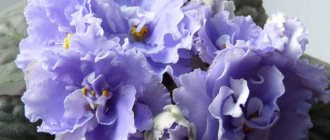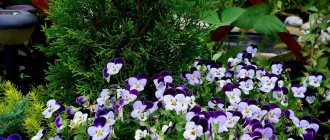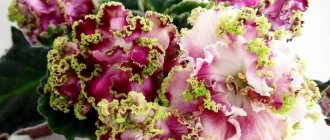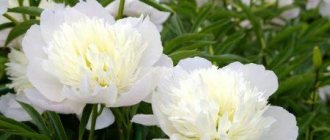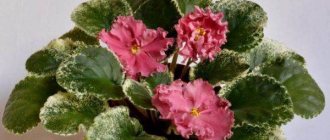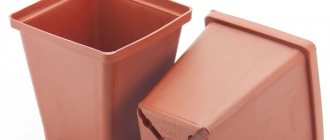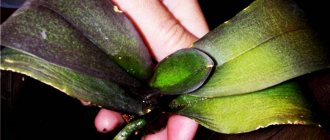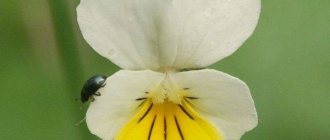Spring refers to the transitional seasons. During this period, plants are especially vulnerable and therefore require additional attention and proper care.
Violet is no exception, because usually during this period flower stalks are laid, leaves and roots are actively growing. This period is ideal for transplants and propagation, but it is important to do everything correctly. If you do not miss these favorable moments, and also do everything correctly, you can provide the flower with strength for full development and flowering.
Further from the article you will learn how to care for violets in the spring so that they grow well and bloom luxuriantly.
Brief biography of the breeder
E.V. Korshunova is one of the most famous Russian breeders. She lives and works in Tolyatti. From a childhood passion for flowers, the selection of violets became the work of her whole life for E. V. Korshunova. Back in the mid-90s, the first variety bred by her appeared. It created a real sensation and was called “EK Bullfight”. Then there were many new varieties.
Violets selected by E. V. Korshunova
Selection of Elena Vasilievna Korshunova
Violet Le - description, varieties and characteristics of varieties
E.V. Korshunova managed to consolidate recessive traits in plants (for example, the bright red color of the EK Bullfight variety). Considering that the selection of one variety requires at least 3 years, it becomes clear what kind of hard work is characteristic of the breeder, because there are about 200 varieties of Saintpaulias bred by her. Popular varieties: EK Marigold, EK Cornflower Blues, EK Cherry Gravure, EK Nevsky, EK Lights of Venice, EK Snowy Carpathians.
Violet DEO-Vostok (O. Aksenkina)
Authorship of the variety
The delicate variegated violet “DEO-Vostok” represents the breeding developments of the Moscow Saintpaulia breeder Olga Nikolaevna Aksenkina, who has been collecting and popularizing tropical beauties since 2004.
All of its varieties are marked with the DEO brand name (an abbreviation of the names of the breeder and her daughters - Olga, Daria and Elizaveta) and are in demand by both domestic and foreign lovers of Uzambara violets.
Taxonomy
According to the taxonomic classification, the variety “DEO-Vostok” is included in the extensive genus Saintpaulia, which is a representative of the Gesneriev family.
Due to the average size of the leaf rosette, the plant is described as a standard type , the color of the leaves indicates that the violet belongs to the variegated varieties, and based on the fullness of the corolla with petals, it is a semi-double species .
Photo and description of appearance
The violet independently forms a spectacular leaf rosette according to the standard type. The bush is always distinguished by a leveled contour, a dense degree of fullness, a round, hemispherical configuration and a unique coloring due to the coloring of the leaves.
The leaf blades have an elongated heart-shaped shape, a quilted surface structure, a salad-colored venation pattern, a slightly wavy outline, a finely jagged edge and a dark green tint. The leaves often turn their tips down or completely hug the flowerpot , but this property of the violet does not interfere with its decorative effect.
ATTENTION! A distinctive feature of the variety is the color of the leaf blades. Each tier of leaves is characterized by its own openwork pattern and different tonal colors. The white color of the pattern on the leaves of the lower row gradually acquires a pinkish tint on the higher tiers, while the uppermost leaves seem to be colored in a grayish-pink color. This play of color creates a feeling of complete difference in the color of each leaf.
blooms luxuriantly, in a cap-like manner, with the formation of medium-sized buds, which open with star-shaped corollas of semi-double fullness. Each petal has a slightly wavy outline, which visually increases the volume of the flower.
The colors of the corollas are distinguished by pastel shades of pink with streaks and lines of darker color intensity , forming marble-style ornaments.
Sports
The “DEO-Vostok” violet maintains its varietal characteristics well; the variety did not show any sports.
Characteristics of varieties
Violet Frosty cherry - description and characteristics of the variety
Today violet EK is a well-known brand in the world of flower growers, famous for its successful plant varieties.
Endorphin
The flowers of the violet EK Endorphin are cherry-coral in color with pink specks and white edging around the edges. Flower type: semi-double.
Kurazh (fialka kurazh)
A wide white border surrounds very large, double flowers. The shade is red and coral. Violet EK Courage blooms profusely, forming an airy, lush cap of inflorescences.
What does violet EK Courage look like?
Expensive truffle
EK Expensive truffle is a violet, the color of its flowers ranges from lilac to purple. The structure of the flower is specific. There are small inclusions of a light shade. The leaves have an interesting color. The dominant shade is dark green. A characteristic feature is a deep purple tint around the edges. The flowers are double and large.
Argentine tango
EK Argentine tango is a violet with flowers up to 7 cm in diameter. A dark ruby shade with an intermittent white edge. The petals are corrugated, semi-double, the leaves are dark emerald green, the center of the rosette is lemon.
Argentine tango variety
Crimson Peony
Bright red flowers, double. The leaves are rich green and have a creamy edge. EK The crimson peony blooms profusely.
Black magnolia
Petals range from dark ruby to black. Rosette with variegated leaves and gold leaf. The shade of the leaves is characterized by a transition to pink-golden color in the center of the rosette.
Note! Black-green leaves form a show rosette.
Pink lotuses
The variety has green outer petals and a pink center. Leaves are rich green. Large and double flowers, the variety blooms profusely.
Roses in the snow
Fantastic combination of white and dark red shades. The edges of the petals are slightly greenish. Exhibition variegated foliage is dark green, turning to purple.
Mrs. Blizzard
Variety EK Mistress snowstorm is terry, slightly wavy, snow-white color, rosette color is bright green.
Variety Mistress snowstorm
The sky is in diamonds
The description of the variety suggests flowers of a delicate blue hue with dark blue veins, wavy and large. The leaves are variegated, green with a wavy cream edge.
On a note! The variety differs in the scale of flowering. A real diamond in the gardener's collection!
Champion
EK Champion is distinguished by velvety flowers of a dark red hue. The inflorescences are double and voluminous. The leaves are dark green with a cream-colored edge. It has a long flowering period with a characteristic bouquet-like shape.
Goddess smile
Variety EK Smile of the Goddess – fantasy. The petals are pinkish-lavender, the flowers are ruffled, wavy, with a rich purple border. The leaves are green. Flowering occurs in the form of a bouquet.
Variety Smile of the Goddess
Cardinal
The violet variety EK Cardinal is known for its large flowers (their diameter reaches 8 cm). The shade of the petals is deep ruby. Variegated leaf with a golden tint.
Bereginya
Violet EK Bereginya has dense double pink inflorescences with a white border and eye. Leaves are rich green.
Dreamer
EK Fantasy is characterized by large inflorescences (diameter up to 6 cm) in a variegated pink and blue color palette. A rosette of leaves of rich dark green color.
Variety Fantazerka
Robinson Crusoe
Violet EK Robinson Crusoe immediately attracts attention with its bright cornflower blue color. The leaves of the plant are serrated, deep green in color with a yellow-cream edge.
Robinson Crusoe variety
Home of God
The variety is distinguished by large double lavender flowers, corrugated and wavy along the edge. The leaves are green in color with a lilac-yellow edge.
Reviews
Iraida Ilyinichna. “ I am pleased to purchase varieties selected by K. Morev, as they are distinguished by the special beauty of their rosettes and flowers, fairly classic and simple care, and long flowering. I really love white-flowered violets, so I looked for the “Waiting for Spring” variety for a long time and was looking forward to its flowering. Saintpaulia did not disappoint my hopes and quickly became my favorite.”
The variety receives a lot of positive feedback from flower growers.
Recommendations for planting and care
Violet Summer Twilight - description and characteristics of the variety
Violets are indoor plants. Comfortable temperature is 20-25 ℃. Exposure to scorching sunlight and drafts is contraindicated. But in general the plant is light-loving. The air is humidified to 50-60%. EK Courage-violet is grown in pots.
Difficulties in caring for the plant:
- Provide a sufficient degree of air humidification.
- Avoid overcooling the root system when growing on a windowsill in winter.
- Provide suitable air temperature.
Basic rules for caring for violets at home
Caring for violets involves regular watering, fertilizing, replanting and pruning.
Important! Do not allow water to get on the growing point (the apical part of the shoot)
Watering
Water the violet every 3 days. It is better to moisten the soil from a watering can at the root, preventing water from entering the plant. The water must be warm, +20…+23°C. Violet growers advise bathing the plant once a month, since dust accumulates on the leaves, which prevents the flower from breathing.
Carefully wash each leaf blade, possibly with soapy water. Let the leaves dry in a warm room. Additionally, you can blot them with a paper napkin.
Return the flowerpot to its place only after it has completely dried.
Additionally, you can blot them with a paper napkin. Return the flowerpot to its place only after it has completely dried.
Top dressing
Grinya violet, like other varieties, requires periodic feeding. They are introduced from mid-spring to early autumn
When choosing a product, pay attention to the stage of flower development:
- When forming a rosette, use organic matter;
- during the flowering period, use preparations based on potassium and phosphorus;
- When growing leaves, it is better to fertilize the soil with nitrogen agents.
Find out,.
Trimming
A violet will do well with three rows of leaves. To do this, periodically renew the flower by cutting off the lower leaves. Also remove wilted and dried foliage.
Transfer
The root system of plants increases every year, and the old pot becomes small in volume. In order for the violet to continue to develop, it needs to be replanted. Transplants are carried out every year. It is better to replant the flower in March, since after winter the soil should be renewed.
The substrate must consist of the following ingredients:
- 6 parts peat;
- 5 parts leaf soil;
- 5 parts of turf land;
- 2 parts sand;
- 1 part humus;
- 0.1 parts vermiculite.
Take care of the new pot too. The container should not be large - only 1-2 cm larger in diameter than the previous one.
Important! In case of diseases, especially rotting, the plant can be replanted ahead of schedule at any time of the year. Step by step transplant process:
Step by step transplant process:
Place a drainage mixture of expanded clay or gravel at the bottom of the pot
Drainage should occupy 1/3 of the volume. Place a layer of substrate of the same thickness on top of the drainage. Carefully remove the violet from the previous pot. The soil can be left in place, partially removed, or completely cleaned from the roots. The older the plant, the more soil needs to be removed. Move the flower to a new pot. Fill in the rest of the substrate.
Features of reproduction
The method of propagation by leaf cuttings (rooting in water) is often used. The leaves are cut from the mother plant, rooted (from 2 weeks to 1 month), covered with a bag. Carry out careful drip irrigation. After rooting, replant.
Additional Information! Using a similar scheme, leaf cuttings are rooted in a substrate (perlite and soil mixture 3:1). The method is suitable for not very high-quality planting material.
When propagating violets, the planting procedure is carried out when shoots with a diameter of up to 5 cm appear at the base of the cuttings. If it is not possible to purchase a ready-made substrate, prepare the soil for planting yourself. To do this, mix peat, river sand, leaf debris, perlite or special moss in equal proportions.
Problems that a florist may encounter
You should always pay close attention to the condition of the plants. It is important to promptly prevent the spread of diseases and pests. Diseases relevant to Saintpaulia ek:
- fungal diseases;
- root rot;
- stem rot;
- leaf rust;
- gray rot;
- late blight;
- powdery mildew;
- vascular bacteriosis.
Additional Information! Due to elevated temperatures, red mites may appear in the flower. When the first “guests” appear, the violets are immediately treated with insecticidal agents.
Typical pests:
- flower thrips;
- cyclamen mite;
- aphid;
- scale insects;
- woodlice;
- sciarids;
- nematodes.
After purchase, it is recommended to replant the plant and inspect the soil. If pests are noticed, the soil is replaced with a better quality one. If the roots have sprouted through the drainage holes, change the flower pot.
Contents in room culture
Violet, representing a large group of varieties that are unpretentious to living conditions, is quite responsive to the regular observance of agrotechnical measures common to most varieties of the genus, provided that the necessary nuances of care are carefully followed :
- It is preferable to place the plant on the west or east window; for windows facing north, it is necessary to equip them with artificial light, and when windows are directed to the south, a special shadow is required for the violet;
Violet requires proper care. - It is worth watering in small doses , after fixing a small degree of drying at the upper tier of the substrate;
- The need for additional mineral fertilizing is best determined by the appearance of the plant;
- Lighting must be natural, long-lasting and diffused;
- Temperature without sharp fluctuations is permissible within +18 + 20°C;
- Place nutritious soil with good aeration and water permeability into the flowerpots; proper drainage is required;
- Replanting should be carried out with the preference of a transshipment method, excluding those cases when a complete replacement of the soil is required.
